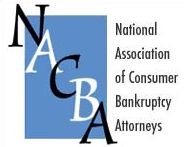How Long Does Bankruptcy Stay on my Record?
Bankruptcy is not often a person’s first choice when it comes to resolving financial matters. Declaring bankruptcy can seem daunting but when you know and understand all the steps and that it is possible to keep your home, it can seem a little less scary.
Get a Lawyer
The first thing you will want to do is get a lawyer who specializes in bankruptcy. Of tentimes, they provide free consultations. Once you’ve found a lawyer, you’ll need to give them the following types of information so they can assess your budget:
tentimes, they provide free consultations. Once you’ve found a lawyer, you’ll need to give them the following types of information so they can assess your budget:
- Income information
- Household size
- Monthly expenses
- Property and assets
- Financial history
Once your lawyer has determined bankruptcy is the right step, they will advise you on all the options available under the Bankruptcy Code. You will need to sign a retainer agreement with the lawyer and pay a retainer fee. The lawyer will help you understand your rights and responsibilities.
Get Attorney Fees Paid
The attorney fees you pay will depend on the type of bankruptcy you file. You’ll either pay upfront or as part of a repayment plan. The two types of bankruptcies filed by individuals are:
- Chapter 7 – allows you to keep your home if there is no equity in the home and mortgage payments are current
- Chapter 13 – allows you to keep your home with a payment plan for a set number of years
Once your fees are paid, your attorney will help you prepare a bankruptcy petition.
Get Your Credit Counseling Certificate
The next step is to receive a credit counseling briefing. This is done with an approved, non-profit counseling agency. They will help you verify you are making the best decision concerning your financial situation. Following this, a Debtor Education or Financial Management Briefing will be held. This class can be done in person. over the telephone or online.
If you have more questions, contact the experts at Clark & Washington today.
Image Source: Pixabay



